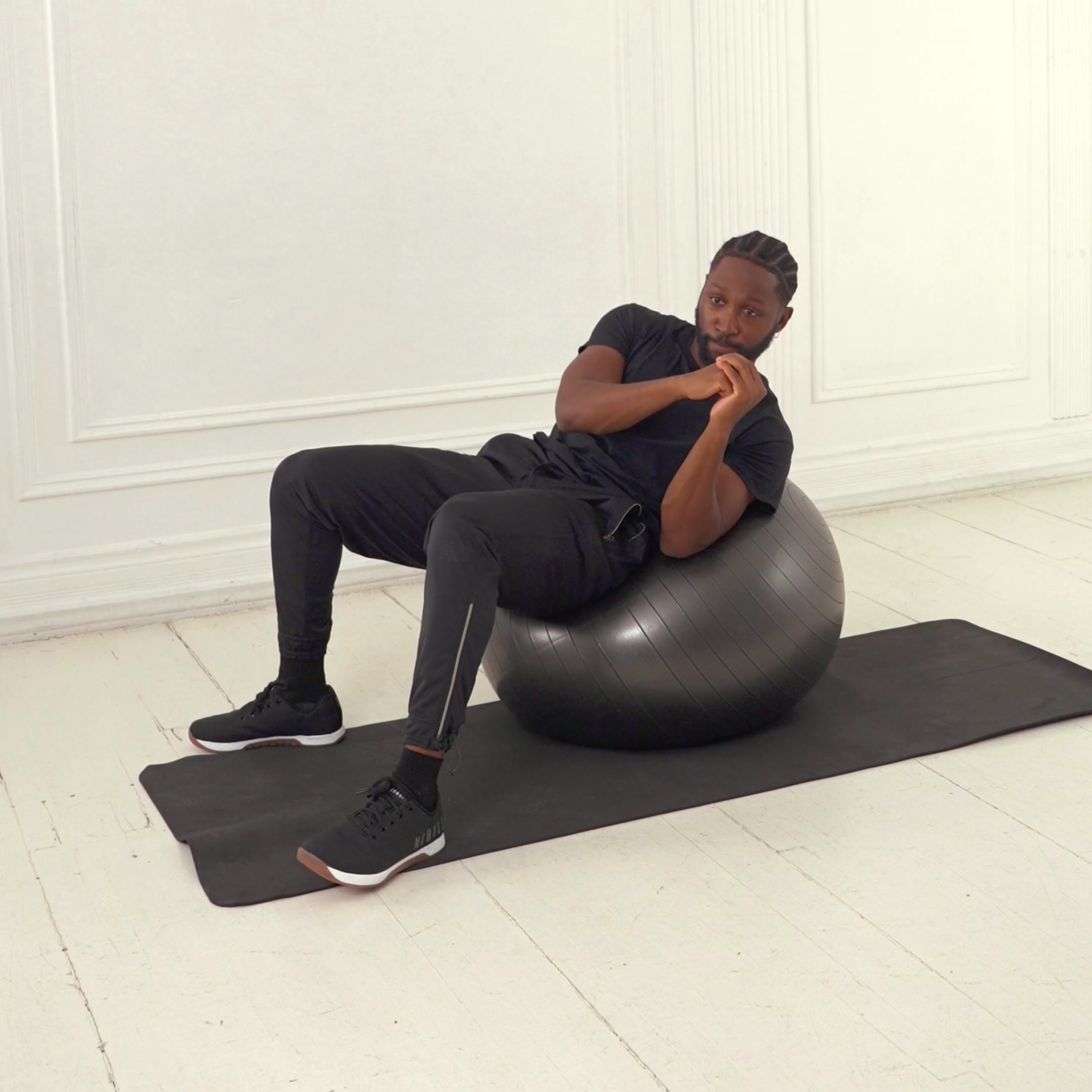Stability Ball Abdominal Twist
A rotational core exercise using a stability ball that targets obliques and rectus abdominis to build rotational strength, stability, and core definition; commonly scaled with added weight for progression.
About Exercise
Equipment
Stability Ball
Difficulty
3/5 • Intermediate
Primary Muscle Groups
Obliques, Abs
Secondary Muscles
Lower Back, Hip Flexors
Accessory Muscles
Glutes
Popularity Score
7
Goals
Training Style
Setup Requirements
Requires Rack
No
Requires Bench
No
Requires Spotter
No
Space Needed
Small
Noise Level
Low
Muscle Breakdown
View Muscle MapObliques
10/10External Obliques, Internal Obliques
Abs
8/10Rectus Abdominis, Transverse Abdominis
Lower Back
5/10Erector Spinae
Hip Flexors
3/10Iliopsoas
Glutes
2/10Glute Max
Programming
Typical Rep Range
10-20 reps
Rest Between Sets
30-60 seconds
How to Perform
Sit on the stability ball and walk feet forward until upper back and head rest on the ball, lifting hips to form a straight line from knees to shoulders with feet shoulder-width apart on the ground.
- Brace your core to stabilize on the ball.
- Rotate torso to one side, rolling shoulder toward the ball while keeping hips stable.
- Hold the twist briefly, contracting obliques.
- Return to center with control.
- Repeat to the opposite side.
- Alternate sides smoothly.
Coaching Tips
Form Cues
- Initiate from obliques
- Keep hips stable
- Maintain straight line
- Control the rotation
- Brace core throughout
Breathing
Inhale as you return to center; exhale during the twist while bracing your core.
Tempo
2-1-2
Range of Motion
Twist until shoulders are 45 degrees from center, keeping hips level and back straight without excessive spinal rotation.
Safety
Safety Notes
- Avoid if acute lower back pain exists
- Stop if spinal strain occurs
- Use smaller range if balance is poor
- Ensure ball is properly inflated
Spotting
Not typically needed; perform in open space for safety, or use wall for beginner support.
Common Mistakes
- Using momentum from arms
- Hunching the back
- Allowing hips to dip
- Twisting too far beyond comfort
- Not engaging core fully
When to Avoid
- Acute lower back injury
- Recent abdominal surgery
- Severe balance issues
Flexibility Needed
- Adequate spinal rotation mobility
- Shoulder flexion for arm position
Build Up First
- Basic core bracing competency
- Familiarity with stability ball balance
Also known as
Stability Ball Russian Twist, Oblique Twist
Found this helpful?
Share your thoughts or help us improve this guide.
Similar Exercises

Stability Ball Russian Twist
Stability Ball
Obliques

Stability Ball V-Up
Stability Ball
Abs

Stability Ball Pike
Stability Ball
Abs

Stability Ball Plank
Stability Ball
Abs

Stability Ball Crunch
Stability Ball
Abs

Stability Ball Pull In
Stability Ball
Abs

Stability Ball Deadbug
Stability Ball
Abs

Stability Ball Rollout
Stability Ball
Abs

Stability Ball Half Moon
Stability Ball
Obliques

Stability Ball Leg Raise
Stability Ball
Abs


subscribe to our newsletter
Contact Us
hello@trainfitness.aiFind Us
130 Spadina Avenue, Toronto,
Ontario, M5V 0H4, Canada
©2025 All Rights Reserved
